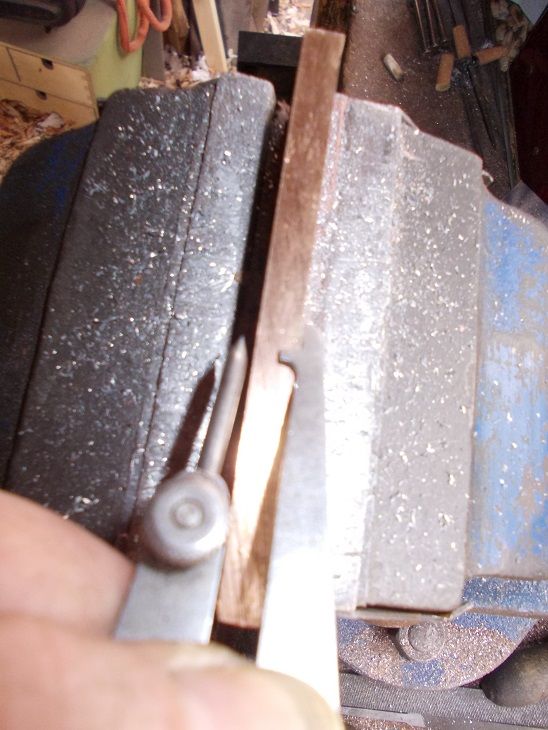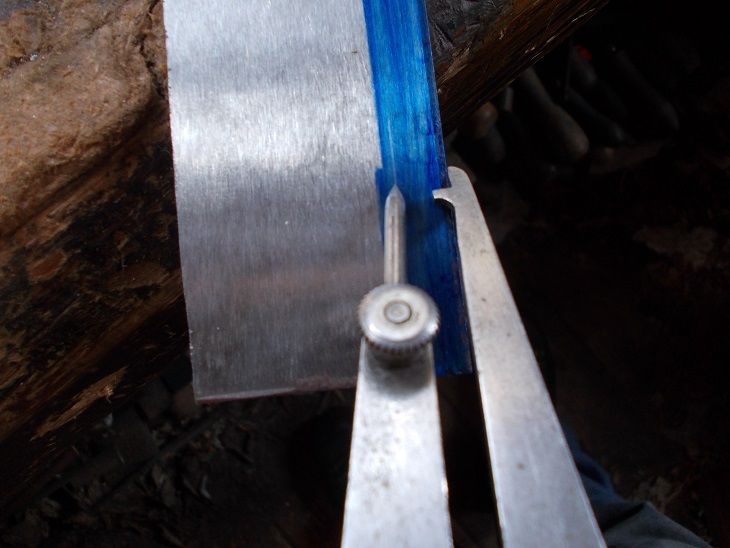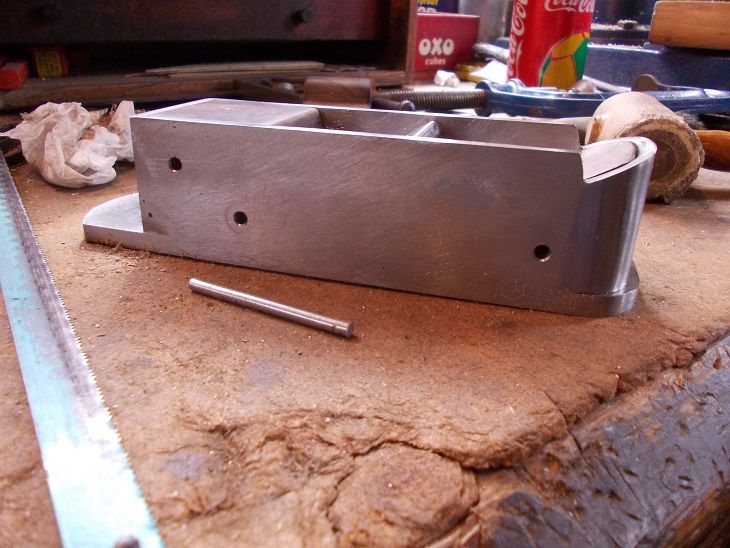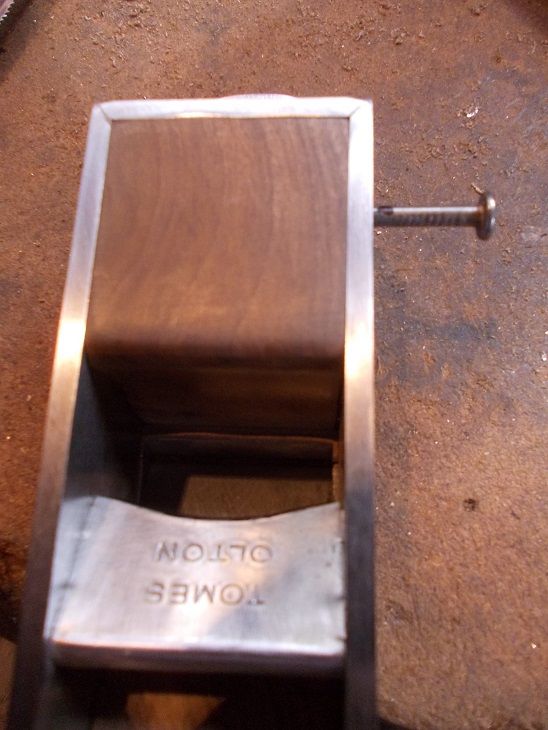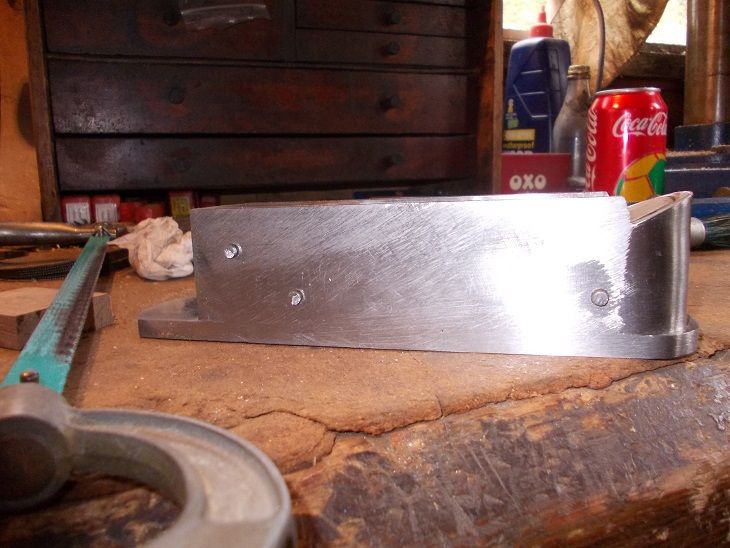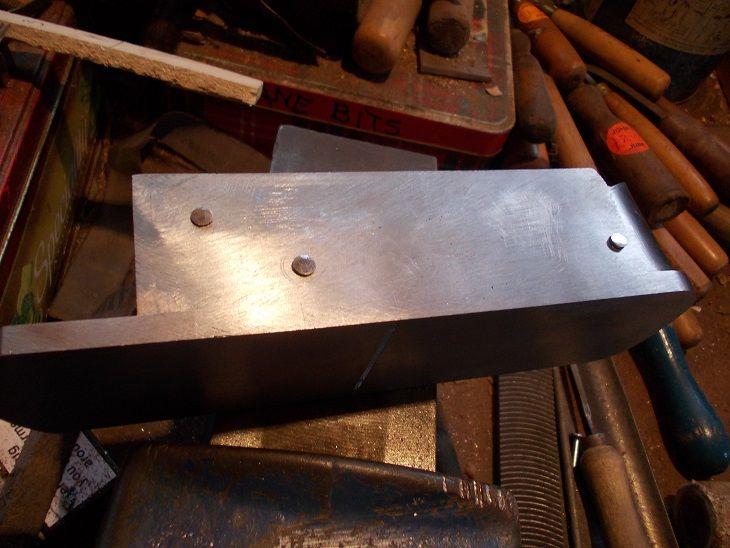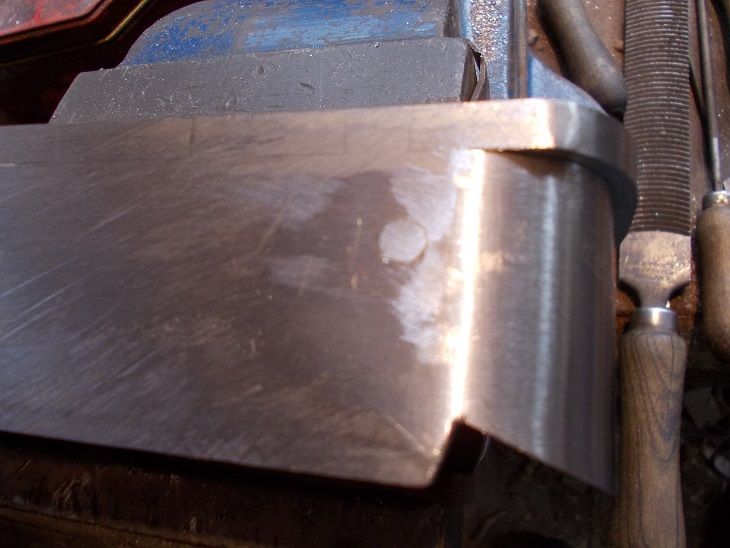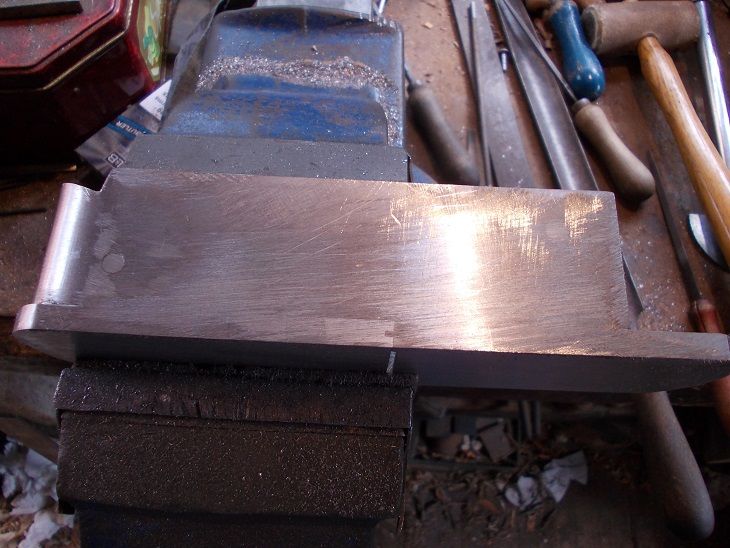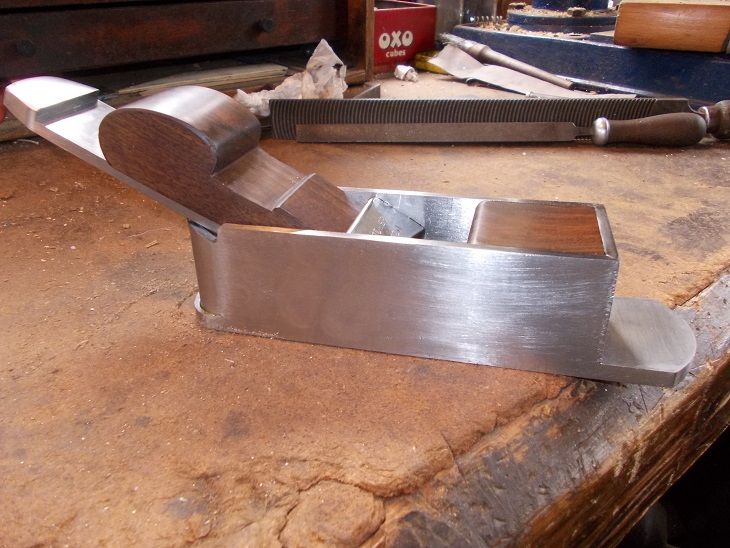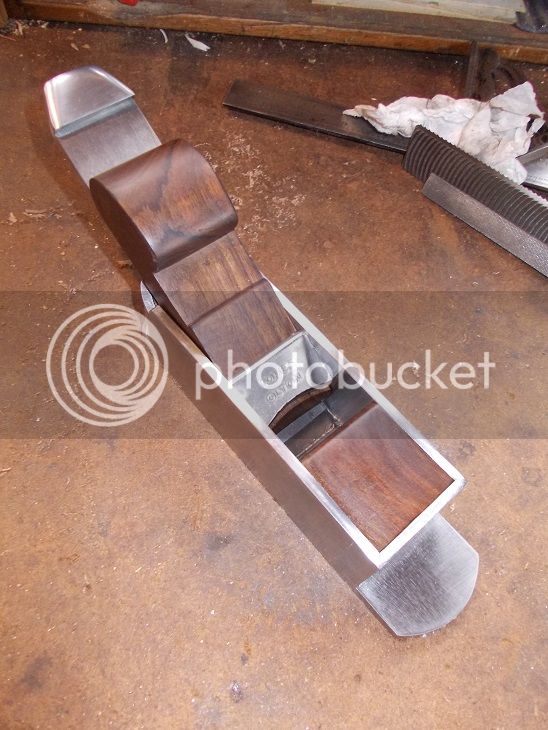Richard T
Established Member
I have made my first plane with an o1 sole. Much tougher to work but a lot more satisfying.
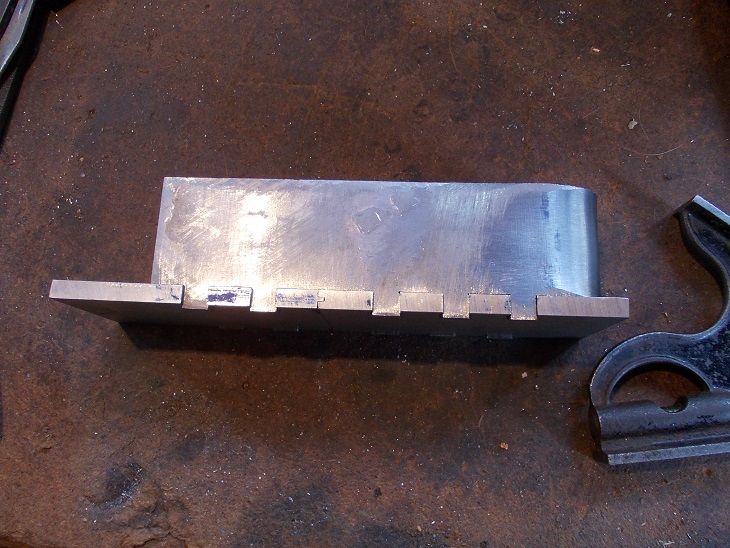
I had in mind Bill's copies of the Norris # 10, but as I have never seen one and don't know the spec s, I guessed at 25 degree bed and settled on using the steel that I had, leaving it at 7 - 3/8" long. The upper body is 6" long.
So I can't say it's a 'copy' more of an unsure tribute.
I went back to Walnut for this one. I think it will be very dark when oiled.
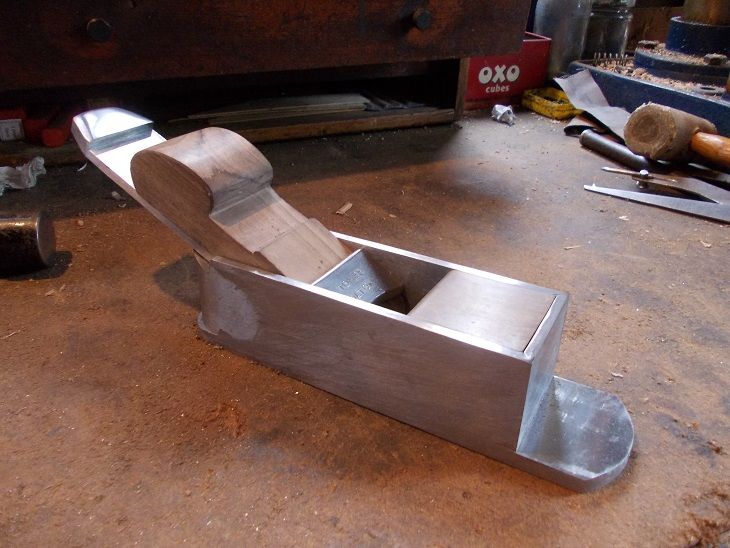
I put an o1 sneck on it too riveted with bits of a 4mm nail.
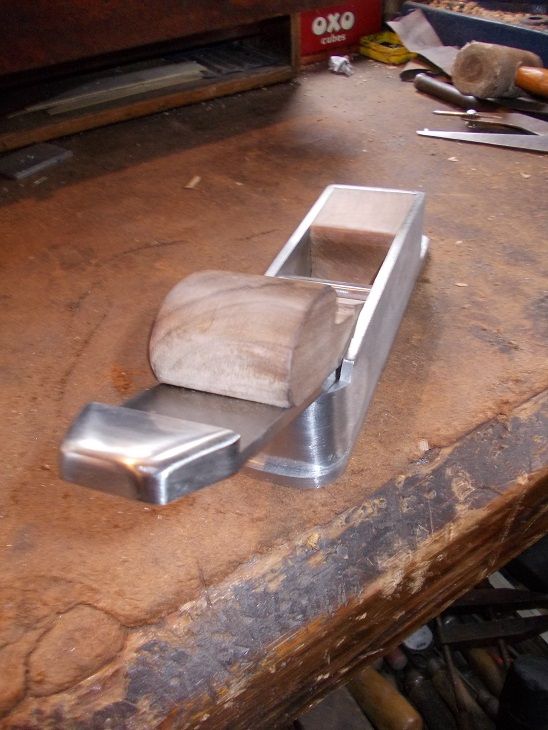
I spent a lot of time on the front infill. I'm very conscious that my wood work needs more practice.
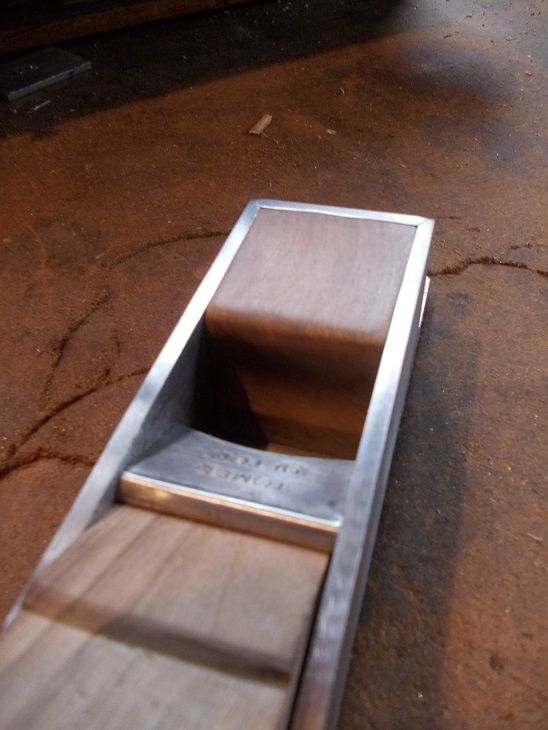
Still things to do - riveting through, finishing the wedge, lapping. But it cuts great, though the edge is very new and needs taking back a bit. It still has the last traces of roughness after I experimented with a lower tempering heat - crumbled magnificently on my diamond plate when I got anywhere near an edge, so I re - tempered it a higher temperature.
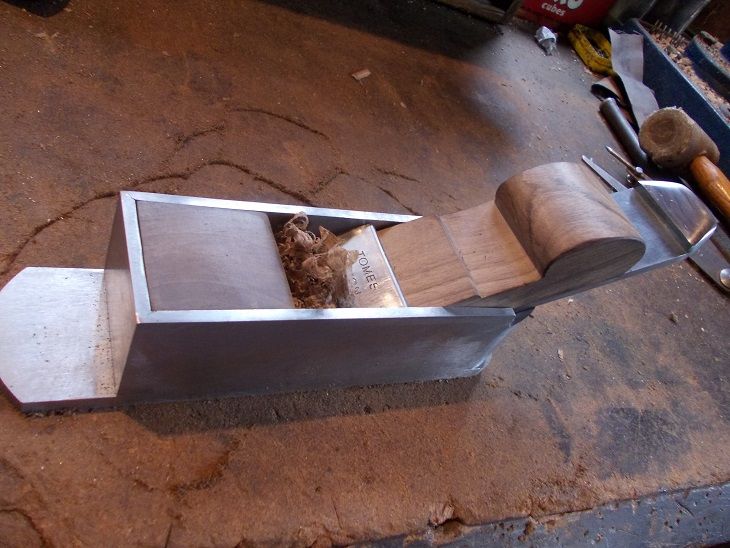

I had in mind Bill's copies of the Norris # 10, but as I have never seen one and don't know the spec s, I guessed at 25 degree bed and settled on using the steel that I had, leaving it at 7 - 3/8" long. The upper body is 6" long.
So I can't say it's a 'copy' more of an unsure tribute.
I went back to Walnut for this one. I think it will be very dark when oiled.

I put an o1 sneck on it too riveted with bits of a 4mm nail.

I spent a lot of time on the front infill. I'm very conscious that my wood work needs more practice.

Still things to do - riveting through, finishing the wedge, lapping. But it cuts great, though the edge is very new and needs taking back a bit. It still has the last traces of roughness after I experimented with a lower tempering heat - crumbled magnificently on my diamond plate when I got anywhere near an edge, so I re - tempered it a higher temperature.







